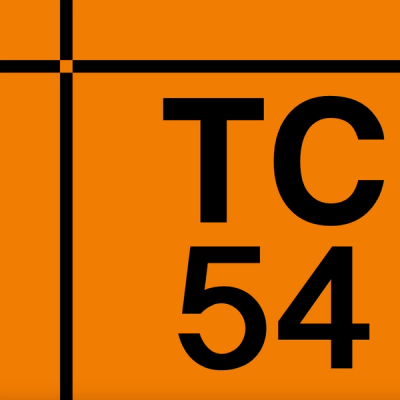
Security News
38% of CISOs Fear They’re Not Moving Fast Enough on AI
CISOs are racing to adopt AI for cybersecurity, but hurdles in budgets and governance may leave some falling behind in the fight against cyber threats.
@metamask/providers
Advanced tools
A JavaScript Ethereum provider that connects to the wallet over a stream
@metamask/providers is a package that provides a set of tools and utilities to interact with the MetaMask browser extension. It allows developers to integrate Ethereum-based applications with MetaMask, enabling functionalities such as connecting to the user's wallet, sending transactions, and interacting with smart contracts.
Connecting to MetaMask
This feature allows you to connect to the user's MetaMask wallet and request access to their Ethereum accounts.
const { ethereum } = window;
if (ethereum) {
ethereum.request({ method: 'eth_requestAccounts' })
.then(accounts => console.log(accounts))
.catch(err => console.error(err));
} else {
console.log('MetaMask is not installed');
}Sending Transactions
This feature allows you to send transactions from the user's MetaMask wallet to another Ethereum address.
const transactionParameters = {
to: '0xRecipientAddress',
from: ethereum.selectedAddress,
value: '0x29a2241af62c0000', // 0.1 ETH
gas: '0x5208', // 21000 GWEI
};
ethereum.request({
method: 'eth_sendTransaction',
params: [transactionParameters],
})
.then(txHash => console.log(txHash))
.catch(err => console.error(err));Interacting with Smart Contracts
This feature allows you to interact with smart contracts deployed on the Ethereum blockchain using the user's MetaMask wallet.
const contractAddress = '0xYourContractAddress';
const abi = [
// ABI array
];
const contract = new ethers.Contract(contractAddress, abi, ethereum);
contract.someMethod()
.then(result => console.log(result))
.catch(err => console.error(err));web3 is a popular library for interacting with the Ethereum blockchain. It provides a comprehensive set of tools for sending transactions, interacting with smart contracts, and more. Compared to @metamask/providers, web3 is more general-purpose and can be used with various Ethereum providers, not just MetaMask.
ethers is a lightweight library for interacting with the Ethereum blockchain. It offers similar functionalities to @metamask/providers, such as sending transactions and interacting with smart contracts. ethers is known for its simplicity and ease of use, and it can be used with different Ethereum providers, including MetaMask.
web3modal is a library that provides a simple way to connect to various Ethereum wallets, including MetaMask. It offers a user-friendly interface for selecting and connecting to different wallet providers. Compared to @metamask/providers, web3modal focuses on providing a seamless wallet connection experience.
The Ethereum provider object injected by MetaMask into various environments. Contains a lot of implementation details specific to MetaMask, and is probably not suitable for out-of-the-box use with other wallets.
The BaseProvider implements the Ethereum JavaScript provider specification (EIP-1193), but must be modified by a sub-class in order to function.
StreamProvider is such a sub-class, which synchronizes its state and marshals JSON-RPC messages via a duplex stream.
MetamaskInpageProvider further extends StreamProvider to support legacy provider interfaces in addition to EIP-1193, and is used to instantiate the object injected by MetaMask into web pages as window.ethereum.
import { initializeProvider } from '@metamask/providers';
// Create a stream to a remote provider:
const metamaskStream = new LocalMessageDuplexStream({
name: 'inpage',
target: 'contentscript',
});
// this will initialize the provider and set it as window.ethereum
initializeProvider({
connectionStream: metamaskStream,
});
const { ethereum } = window;
Types are exposed at index.d.ts.
They require Node.js EventEmitter and Duplex stream types, which you can grab from e.g. @types/node.
The Provider object should not be mutated by consumers under any circumstances. The maintainers of this package will neither fix nor take responsbility for bugs caused by third parties mutating the provider object.
nvm use will automatically choose the right node version for you.yarn setup to install dependencies and run any requried post-install scripts
yarn / yarn install command directly. Use yarn setup instead. The normal install command will skip required post-install scripts, leaving your development environment in an invalid state.Run yarn test to run the tests once. To run tests on file changes, run yarn test:watch.
Run yarn lint to run the linter, or run yarn lint:fix to run the linter and fix any automatically fixable issues.
The project follows the same release process as the other libraries in the MetaMask organization:
main1.x)yarn version --minor --no-git-tag-version)main or 1.x)[20.0.0]
isConnected boolean property is now expected in the result of metamask_getProviderState and metamask_chainChanged events (#404)networkVersion value of loading received by the chainChanged event handler is now interpreted to be null. In this case, the networkChanged event emits a null value as well. (#404)isConnected property instead of the networkVersion property. (#404)isUnlocked boolean property of the metamask_getProviderState and metamask_accountsChanged events (from what is in state) no longer causes the accountsChanged event to be emitted (#405)MetaMaskInpageProvider.isUnlocked() will always return true until the inpage to contentscript stream ends and the provider enters a permanently disconnected state (#405)FAQs
A JavaScript Ethereum provider that connects to the wallet over a stream
The npm package @metamask/providers receives a total of 129,164 weekly downloads. As such, @metamask/providers popularity was classified as popular.
We found that @metamask/providers demonstrated a healthy version release cadence and project activity because the last version was released less than a year ago. It has 9 open source maintainers collaborating on the project.
Did you know?

Socket for GitHub automatically highlights issues in each pull request and monitors the health of all your open source dependencies. Discover the contents of your packages and block harmful activity before you install or update your dependencies.

Security News
CISOs are racing to adopt AI for cybersecurity, but hurdles in budgets and governance may leave some falling behind in the fight against cyber threats.

Research
Security News
Socket researchers uncovered a backdoored typosquat of BoltDB in the Go ecosystem, exploiting Go Module Proxy caching to persist undetected for years.

Security News
Company News
Socket is joining TC54 to help develop standards for software supply chain security, contributing to the evolution of SBOMs, CycloneDX, and Package URL specifications.